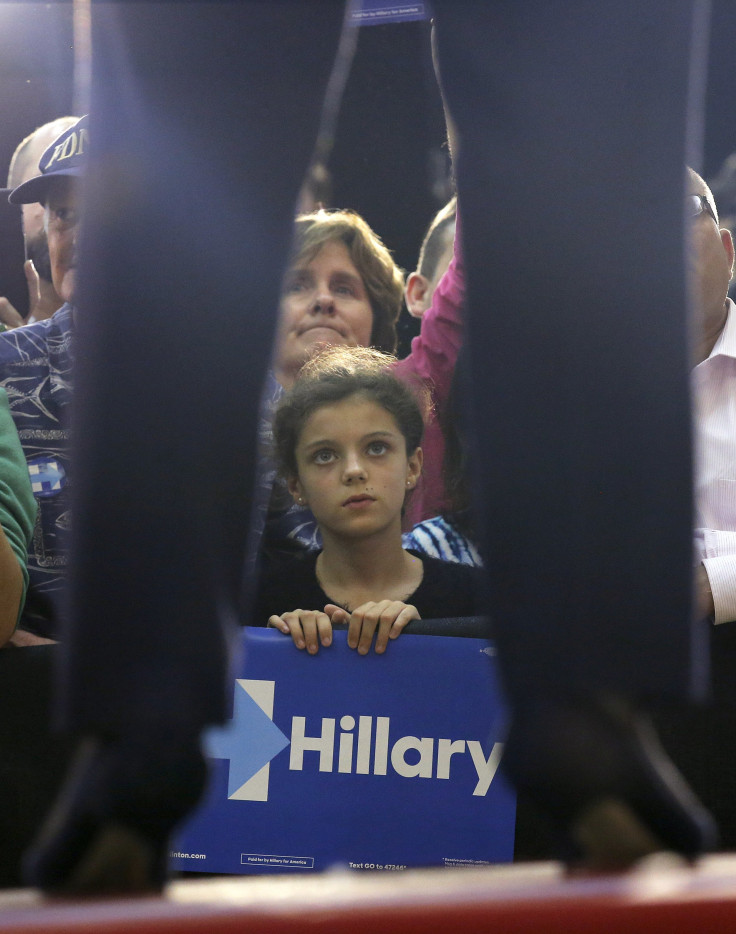Tuesday Election 2016 Results: How Hillary Clinton Can Beat Donald Trump Without White Men

With the Democratic primary race all but decided, former Secretary of State Hillary Clinton has turned toward her likely general election foe, businessman Donald Trump. The billionaire has frequently said he will unite his divided party, but Clinton, too, must work to bring various groups to her side and energize voters to show up in November.
Clinton scored big Tuesday night in Florida, North Carolina, Ohio and Illinois, and in Missouri she was in a virtual tie with Vermont Sen. Bernie Sanders, who won among white male voters. But amid growing talk of a lack of enthusiasm for her among voters, many Democratic strategists said she’ll have no problem driving turnout in November and that Trump, if nominated by the Republicans, will help her to do so.
“I think that Trump’s the best thing to happen for Democratic voter turnout for Hillary,” said Cartney McCracken, a Clinton supporter and a partner at Control Point Group, a Democratic strategy firm in Washington.
Clinton took aim at Trump Tuesday night during a victory speech that called on Americans to protect LGBT and womens' rights, help young Americans struggling with school debt and uphold American values.
"Our commander in chief has to be able to defend our country, not embarrass it, engage our allies, not alienate them, defeat our adversaries, not embolden them. When we have a candidate for president call for rounding up 12 million immigrants, banning all Muslims from entering United States, when he embraces torture, that doesn't make him strong, it makes him wrong," she said. "And this isn't just about Trump; all of us have to do our part. We can't just talk about economic inequality, we have to take on all forms of inequality" — a clear dig at Sanders.

Democratic primary turnout so far has been down from 2008 and lags Republican voting, but it is actually still one of the highest participation cycles in the past 20 years, according to a Pew Research Center study published a week ago. That study found that 11.7 percent of eligible Democratic primary voters are projected to vote this year compared with 17.3 percent for Republicans. While that is a record turnout for the GOP, 2016 is shaping up to have the second-biggest primary participation among Democrats dating back to at least 1992.
“The Democrats are very well organized at getting out the vote. They’ll spend nine figures to turn out Democrats in the general election,” said Steve Murphy, a partner at Democratic consulting firm MVAR in Washington. But Trump is “worth 10 times as much to us in voter turnout.”
Democrats say turnout has been reduced during the primaries because of the overwhelming expectation that Clinton would win. They expect high turnout in November.
“I think that it’s always hard to get people excited about a primary, any election where the result seems like a foregone conclusion,” said Steve Schale, a Florida Democratic strategist who supports Clinton and ran then-Sen. Barack Obama’s 2008 Florida operation. “In spite of the fact that Sanders has run an impressive campaign. … In reality, most folks have known where this thing is going to land for a while. That’s always going to have a depressing impact on turnout.”
But Sanders is clearly beating Clinton among white male and younger voters. In last week's Michigan primary, for example — a close win for Sanders that showed potential vulnerability for Clinton — the senator pulled off an upset in part by beating her among white voters, 56 percent to 34 percent. He also won among voters aged 18-29 with 81 percent support to 19 percent for Clinton, according to exit polls. He won white men 62 percent to 37 percent.

Strategists note that attracting younger voters to Clinton's campaign will be important in a general election but say white men aren’t a necessary demographic for her. Clinton appears to have a good chance of appealing to the winning coalition of voters that Barack Obama attracted in 2008: minority and young voters. Black voters have supported her at high rates so far, and she appears to be accepted as Obama's heir with that demographic. Hispanic voters, too, give her high levels of support (and dislike Trump). And, to answer the millennial problem: A recent poll shows that a Clinton vs. Trump matchup in the general election would overwhelmingly favor her, 52 percent to 19 percent.
“White male voters don’t vote for Democratic presidential candidates anymore. That’s a thing of the past,” said Brad Bannon, owner of Bannon Communications Research, a Democratic polling and consulting firm in Washington. “The Obama people credit their 2008 and 2012 victories to what they call the coalition of the ascendant … comprised of young people, blacks and Latinos.”
“Young people are voting for Bernie Sanders, but Latinos and blacks are voting strongly for Hillary Clinton,” he added. When it comes to November, millennial voters “hate Donald Trump so much she doesn’t have to worry about turnout because Trump is going to turn them out for her.”
© Copyright IBTimes 2024. All rights reserved.





















